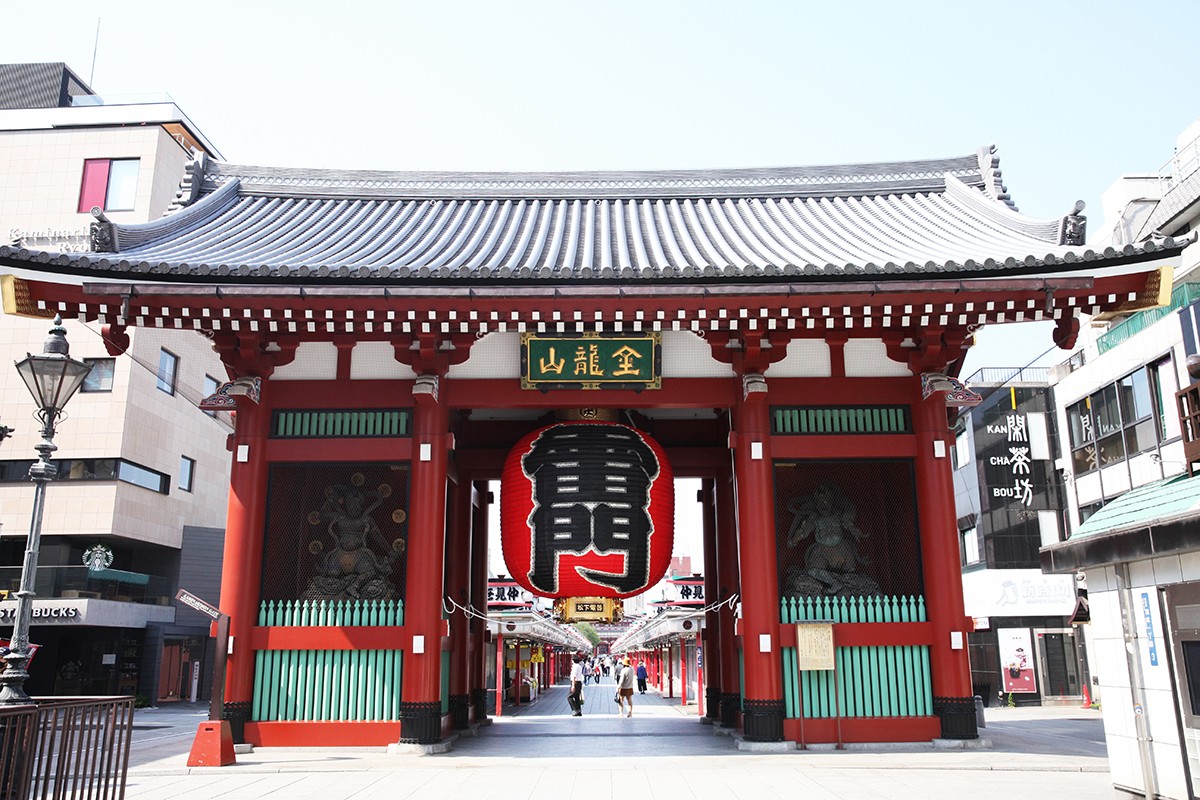
About 30 million people visit Senso-ji Temple every year for worship and sightseeing, and it is one of the most popular spots in Tokyo. Taking a commemorative photo in front of Kaminarimon and shopping and eating on Nakamise Street are fun, but Sensoji Temple has so many attractions that it would be a waste to be satisfied with just that.
This time, we will introduce how to enjoy Senso-ji Temple and how to visit properly. Let's fully enjoy the precincts of Senso-ji Temple.
What is Senso-ji Temple, the oldest temple in Tokyo?
Senso-ji Temple, which has a history of nearly 1400 years, is located about a 5-minute walk from Asakusa Station. There are 14 structures like halls and gates on the precinct with a total area of about 3,408 square meters.
It began in 628 when two fishermen found a statue of Sho Kanzeon Bodhisattva (Kannon-sama in short) in the Miyato River (present-day Sumida River), which was then enshrined by the head of the land in his private residence.
After that, Kannon-sama appeared in a dream of a monk named Shokai Shonin, and told him that the principal image of Buddha was to be enshrined in the Zushi (a closet-like shrine, in Gokyuden) as a secret Buddha image. In 857, Jikaku Daishi Ennin created a statue of Sho Kanzeon Bodhisattva (Gozen Honzon - front Buddha image) that looks exactly like the principal image, and currently, this Gozen Honzon is exhibited every December.
On the other hand, temples have been destroyed and burned down many times, including by major earthquakes. However, each time it has been rebuilt by historical great figures and believers.
Highlights around the grounds of Senso-ji Temple
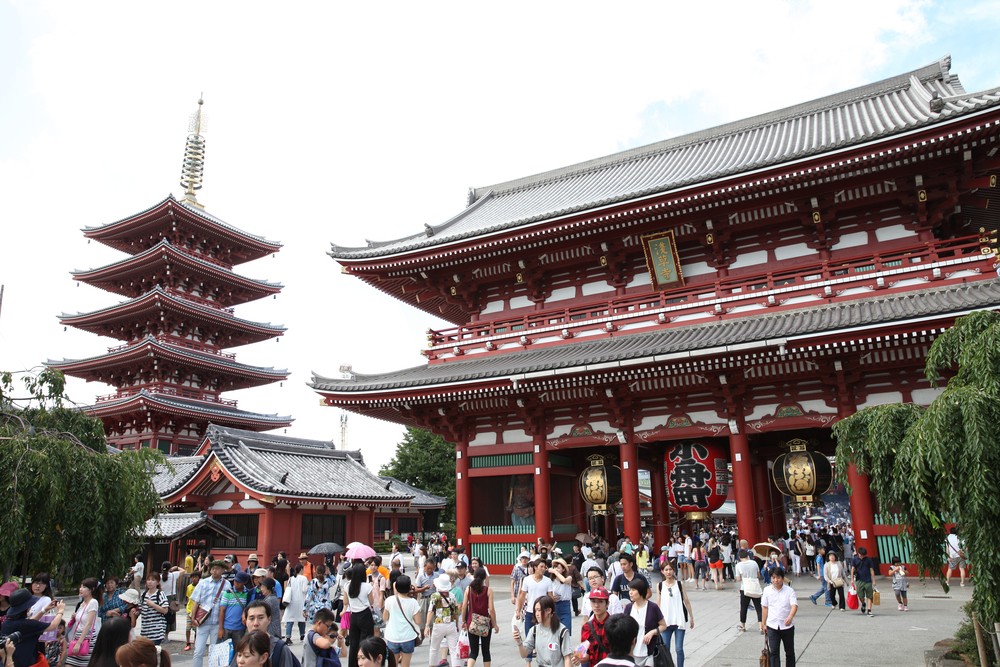
Senso-ji Temple has a lot of impressive Buddhist art, including a large red lantern with the word “Kaminarimon” written on it, the main hall and other halls, and Buddhist statues. It is designated as a designated Place of Scenic Beauty.
Highlights of Senso-ji Temple 1. Kaminarimon Gate

Kaminarimon (雷門), a symbol of Asakusa and a popular photo spot, is the entrance to Senso-ji Temple. The official name "Furaijinmon" (風雷神門) comes from the fact that the gods of wind (風神 / Fujin) and thunder (雷神 / Raijin) are enshrined on the left and right sides of the gate.
Since its foundation, Kaminarimon has been destroyed and rebuilt many times. Lanterns began to be dedicated to Kaminarimon after it was rebuilt in 1795.
The current gate was rebuilt in 1960, and has a dragon carved on the bottom of a 3.9m high, 700kg large lantern hung in the center.
Highlights of Senso-ji Temple 2. Hozomon Gate

After passing through the Kaminarimon Gate and proceeding along Nakamise Street, you will find the Hozomon Gate (宝蔵門), which has a large lantern with the words “Kobunemachi” (小舟町) written on it. It is a two-storied gate that was also called the Niomon Gate (仁王門) because Nio (仁王) statues are enshrined at both ends. When it was rebuilt in 1964, it was renamed Hozomon (宝蔵 / Hozo means storehouse for treasures) because it doubled as a sutra storehouse and housed Buddhist scriptures and temple treasures.
At the Hozomon Gate, the National Important Cultural Property "Genban Issaikyo" (元版一切経) is stored. And hanging from the back of this gate is a large straw sandal with a length of 4.5m, a width of 1.5m, and a weight of 500kg. It is said that the these straw sandals worn by Nio-sama represent the power of the Nio-sama, and the demons are surprised and leave.
Highlights of Senso-ji Temple 3. Main Hall

After passing through the Hozomon Gate, you will find the main hall that enshrines the principal object of worship, Sho Kanzeon Bodhisattva. The inside of the hall is divided into the inner sanctuary (Naijin) and the outer sanctuary (Gaijin)*, and in the center of the inner sanctuary is the most sacred space, the Gokyuden. Enshrined in the upper section of the Gokyuden is the principal image of a hidden Buddha enshrined in the Zushi. Gomaedachi Gohonzon (principal standing image) is enshrined in the lower part of the hall as a visible object of worship.
The inside of the hall is decorated with calligraphy and paintings such as the three ceiling paintings "Ryu no Zu", "Tenjin no Zu", and "Sange no Zu" on the Ren and the ceiling of the outer sanctuary.
In front of this main hall, there is the “Omizuya” where you can purify yourself before visiting the shrine, and the “Jokoro” where you can bathe your body in incense smoke to ward off evil spirits. There is also a legend that the smoke from the incense burner heals the bad parts of the body too.
* Naijin: Central part of the main hall, inner sanctuary. Gaijin: Outside the naijin
Ren: Engraved couplet calligraphy hung on the pillars on the left and right of the stairs leading up to the main hall and on the outside.
Highlights of Senso-ji Temple 4. Five-storied pagoda
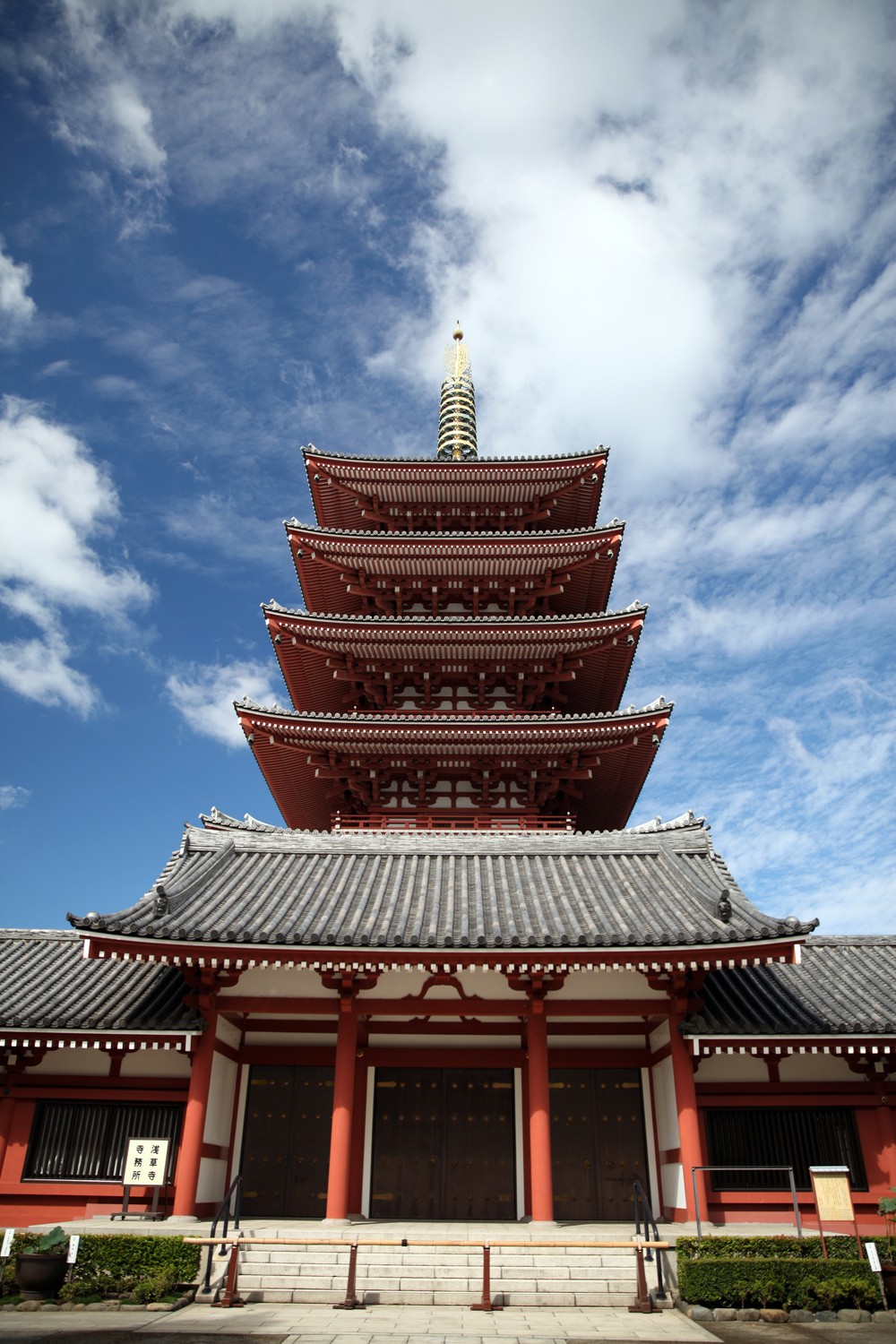
Located on the west side of the Hozomon Gate and the main hall, the vivid vermilion five-storied pagoda stands out in the precincts of Senso-ji Temple. The current five-storied pagoda was rebuilt in 1973 as a pagoda built on top of the foundation building (Toin).
The width of the five overhanging roofs gradually narrows as it goes higher, creating a beautiful silhouette together with the pagoda and nine wheels on the roof. What gives it a sense of dynamism is the curving curve of the eaves. At night, the five-storied pagoda is lit up together with the main hall and Hozomon gate, creating a magical atmosphere.
The top layer of this five-storied pagoda contains the relics of the Buddha (Buddha's bones) inherited from Sri Lanka's Isurumuniya Temple.
Highlights of Senso-ji Temple 5. Denboin (Japanese garden)
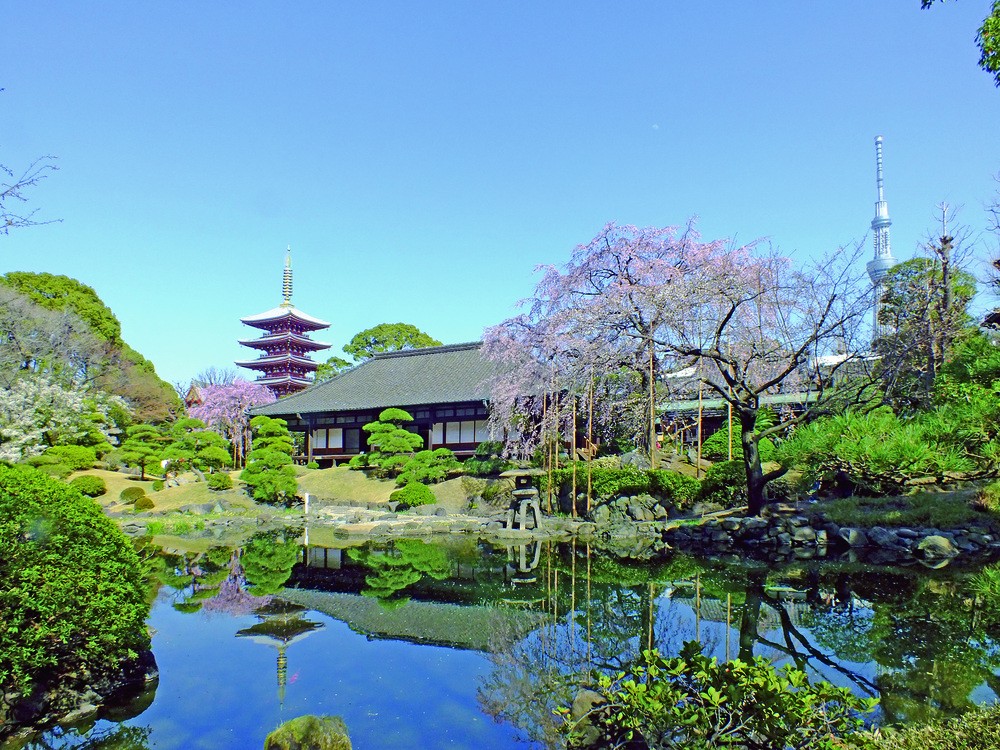
Senso-ji Temple's honbo*, Denboin, is located on Denboin-dori on the west side of Nakamise-dori. The Japanese garden that occupies most of the grounds is one of the few remaining temple gardens in Tokyo that has been passed down since the early Edo period. This Japanese garden is a strolling garden with a small path around the Oike Izumi, which is divided into two, and has been designated as a national Place of Scenic Beauty.
You can enjoy the atmosphere of the four seasons, and you can feel the history of the building, including the reception hall and entrance, which are designated as national Important Cultural Properties, the large study room, the small study room, the new study room, and the kitchen.
Unfortunately, it is not open to the public, but there are occasional special openings, so if you want to know when it is open, check the official website of Sensoji Temple.
*Honbo (本坊) is a place where the chief priests live and do temple work.
The blessings of Senso-ji Temple and how to worship. May your wishes come true!

The principal image of Senso-ji Temple, which has been supported by people's faith, is Sho Kanzeon Bodhisattva. He is said to be the most merciful of Buddhas. The benefit of worshipping is the fulfillment of your wishes. It is said that all wishes will come true. Therefore, we will introduce how to visit the main hall. Let's visit with a prayer for the fulfillment of your wishes.
How to worship
- Kaminarimon: At Kaminarimon, the temple gate, bow once with your palms together and proceed to Nakamise on the approach.
- Omizuya: Purify with water. Fill the ladle with water and wash your left hand first, then your right hand. After rinsing your mouth with the water stored in your left hand, wash your left hand and use the remaining water to wash the handle of the ladle.
- Jokoro: Offering incense and purifying the body with smoke from the incense burner
- Main Hall: 1. Bow once and put the money in the offertory box. 2. Put your hands together, pray and bow once. 3. Bow lightly.
- Kaminarimon: When exiting the Sanmon (Kaminarimon), turn your whole body to the main hall and bow once.
In addition to the main hall, Senso-ji Temple has various halls, and you can expect different benefits from each. Let's visit after visiting the main hall.
- Yogodo: prosperous business and financial luck
- Yakushido: Prayers for recovery from illness and good health
- Awashimado: Things related to women, such as childbirth, safe delivery, recovery from gynecological diseases, and improvement in sewing.
- Zenizuka Jizodo: Prosperous business. If you dedicate salt and pray, you will also receive the benefit of fortune.
- Chingodo: Protection against fire and theft, improvement in various arts
- Kumenoheinaido: Matchmaking and Good Matchmaking
If you go all the way to Senso-ji Temple, then better get omikuji, goshuin, and omamori!
After visiting the main hall and other halls at Senso-ji Temple, it's time to draw an omikuji. Good advice is written. Also, get goshuin and omamori to take home with you.
Omikuji
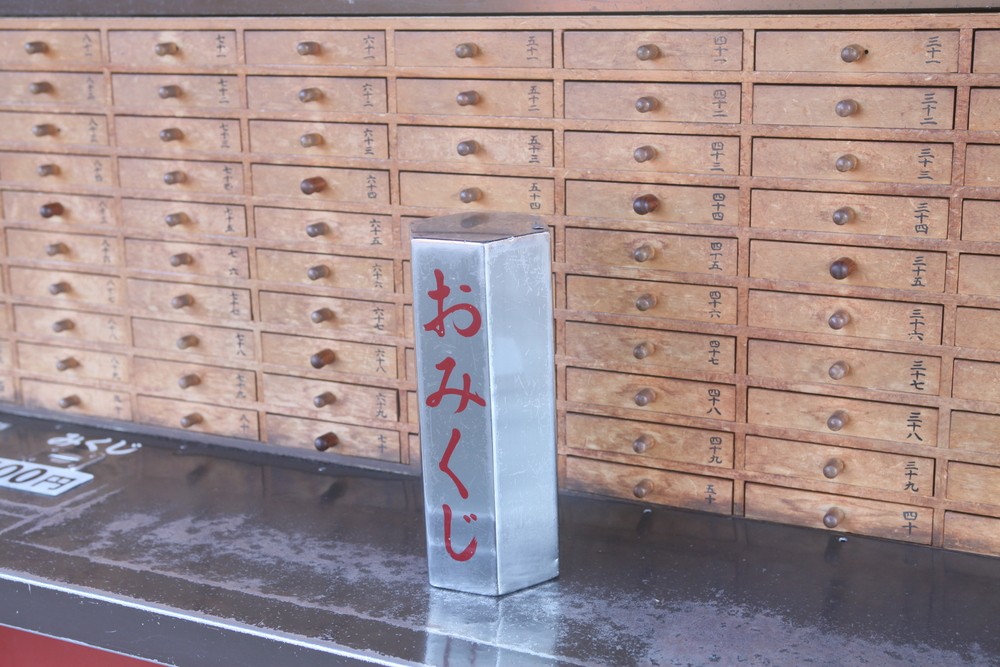
Omikuji can be drawn at various places in the precincts. Rumor has it that many of the omikuji at Senso-ji Temple are bad luck, but people feel that way because the ratio hasn't changed since ancient times. In the omikuji called Kannon Hyakuru, which is used at Senso-ji Temple, it is said that even if bad luck comes out, if you stay patient and faithful, it will turn into good luck. And even if you draw Daikichi, the opposite phenomenon may occur, too. Therefore, it is recommended that you draw an omikuji to heed the advice, rather than being overwhelmed by the fortune it tells.
Goshuin
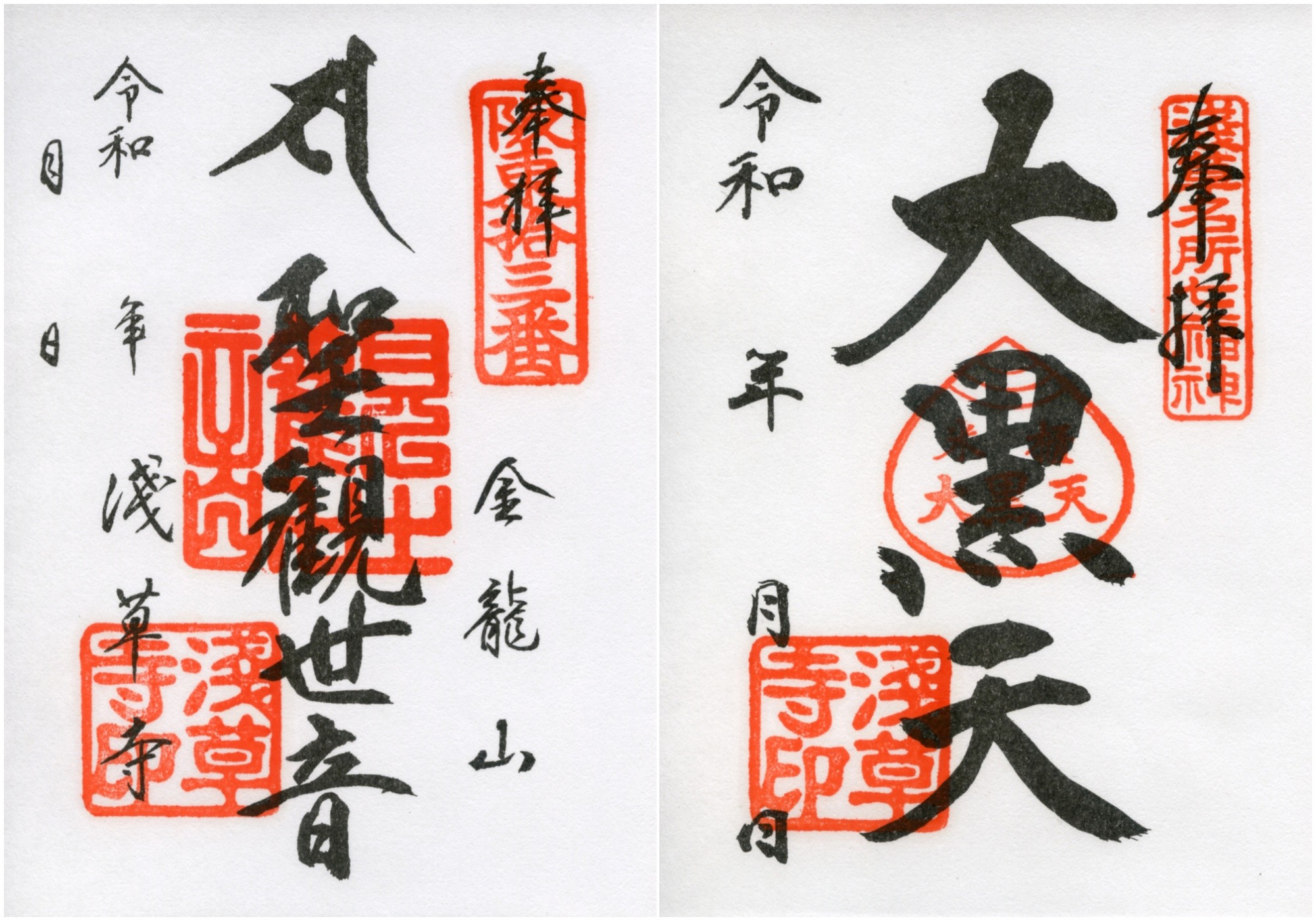
A goshuin is a stamp or imprint that is stamped as proof that you have visited a shrine or temple, and at Senso-ji, it is available for purchase at Yogodo. At Senso-ji Temple, you can get a goshuin of the principal image and a goshuin of Daikokuten, one of the seven deities of good fortune. The goshuin of the principal image is written with "Sho Kanzeon Bodhisattva", the goshuin of Daikokuten is "Daikokuten", and the dates of visiting both are written in ink.
Omamori
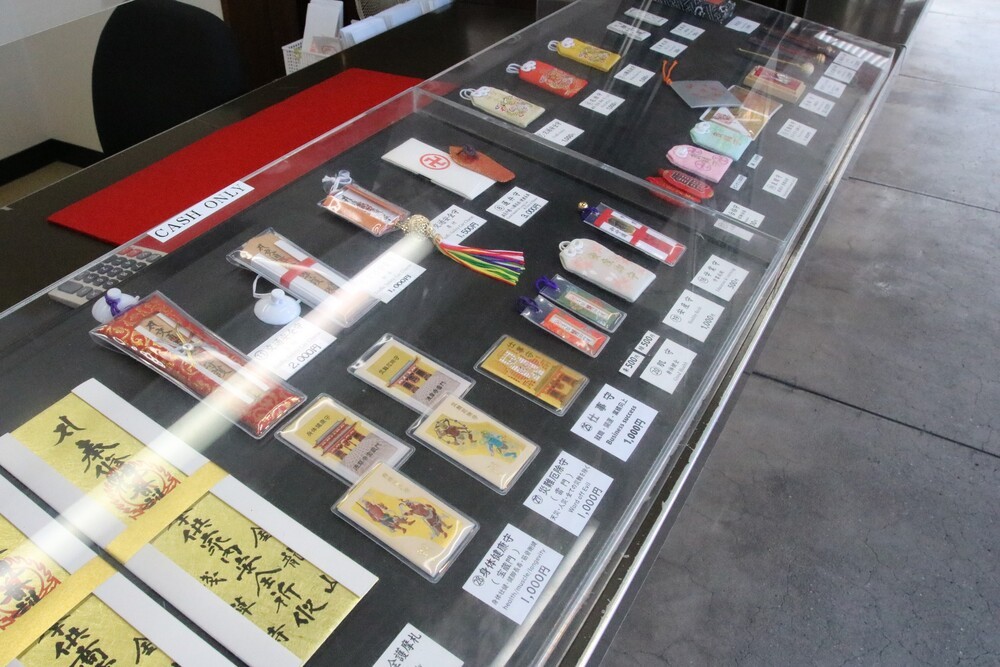
Omamori can be purchased at various locations within the precincts, just like omikuji. As Sensoji Temple offers a wide variety of blessings, there are many types of amulets, such as prayers for good luck, financial fortune, matchmaking, and recovery from illness. Among them, the standard and popular omamori "Kinrin Mamori" is said to ward off misfortune, ward off thunder, and protect traffic. There are two patterns of the principal image, Sho Kanzeon Bodhisattva, and the guardian principal image associated with the sexagenary cycle, both of which are designed with golden dragon scales.
Events/Festivals Held at Senso-ji Temple
New Year's Grand Prayer Ceremony/Hatsumode (New Year's Day - January 7th)

At Sensoji Temple, New Year's bells ring at midnight to welcome the New Year. 108 believers ring the bell in turn. The temple is normally open from 6:00 am to 5:00 pm, but on New Year's Eve it is open from 6:30 am to 7:00 pm, and on New Year's Day from midnight to 8:00 pm. Many people come to worship along with the New Year's bell.
At the same time, from New Year's Day to January 7th, the New Year's Grand Prayer Ceremony is held in front of Gokyuden in the inner sancutary of the main hall. At the New Year's Grand Prayer Ceremony, the prayer cards given to believers are lined up and the priests perform prayers.
Senso-ji Temple is usually crowded with tourists and worshipers even on weekdays, but on New Year's Day it is even more crowded than usual. The busiest hours are between midnight and 3:00 am. After that, it will be relatively relieved until about 6:00 am, but after 10:00 am, it will be as crowded as the peak time. Therefore, it is recommended to visit the shrine early in the morning or after 5:00 pm on New Year's Day.
Shimanrokusen Nichi / Hozuki Market (July)
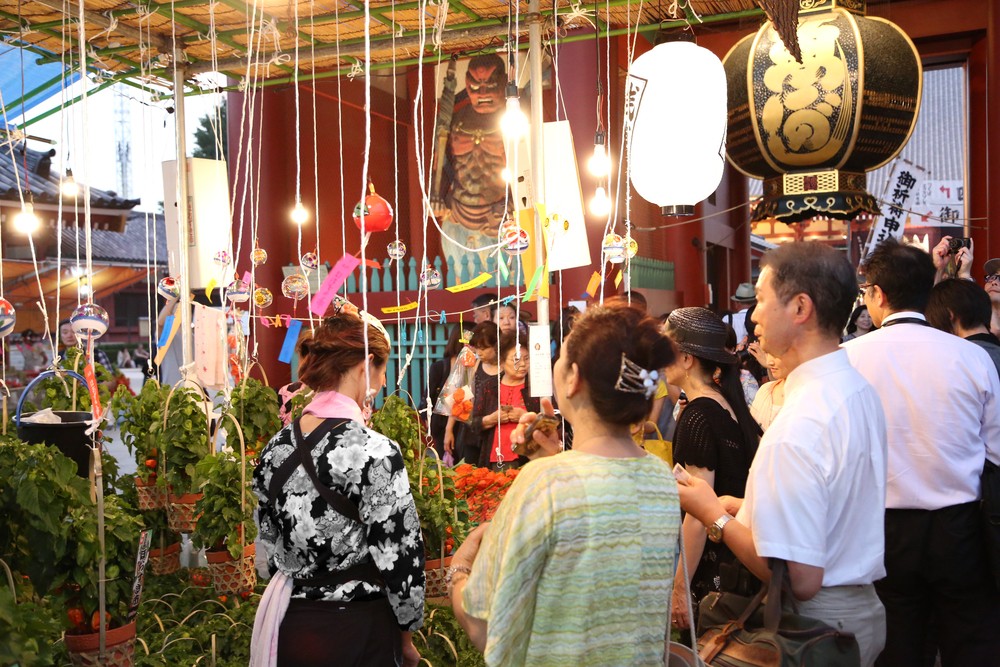
Senso-ji Temple's summer tradition is "Shimanrokusen Nichi/Hozuki Market". On the 9th and 10th of July, the grounds of Senso-ji Temple will host a hozuki market. The name Shimanrokusen Nichi (四万六千日 / Shimanrokusen-nichi means 46,000 days) comes from the belief that if you visit the shrine on this day, you will receive 46,000 days worth of merit*.
It was around 1764 to 1772 that the hozuki market began to be held on the Shimanrokusen Nichi festival. Influenced by the hozuki market that was held on the Shimanrokusen Nichi at Atago Shrine in Shiba, it began to be held at Senso-ji Temple as well. At that time, Hozuki was used as a medicinal herb, and together with its effect, the Shimanrokusen Nichi festival at Senso-ji Temple became even more lively, and continues to this day. On this day, wind chimes and various stalls are set up, and you can enjoy the atmosphere of Edo more than usual.
*功徳 / Kudoku - Merit: Good deeds. It is said that you can receive benefits by accumulating merit.
Spot Information
- Name: Senso-ji Temple
- Address: 2-3-1 Asakusa, Taito-ku, Tokyo
- Access: About 5 minutes on foot from Tobu Skytree Line, Tokyo Metro, Tsukuba Express, Toei Subway Asakusa Station
- Hours: Precincts: 24 hours, Main Hall: 6:00-17:00 (October-March: 6:30-17:00)
- Admission fee: Free
- HP: https://www.senso-ji.jp/
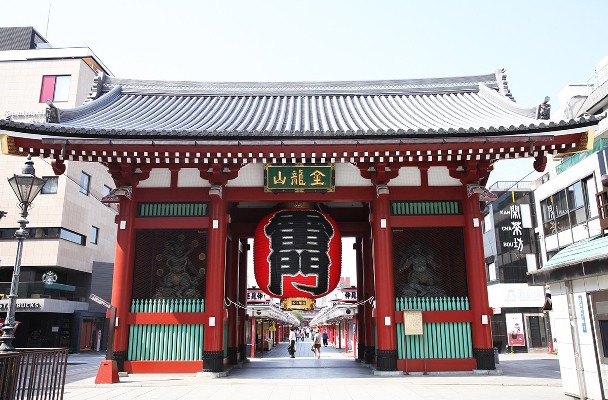
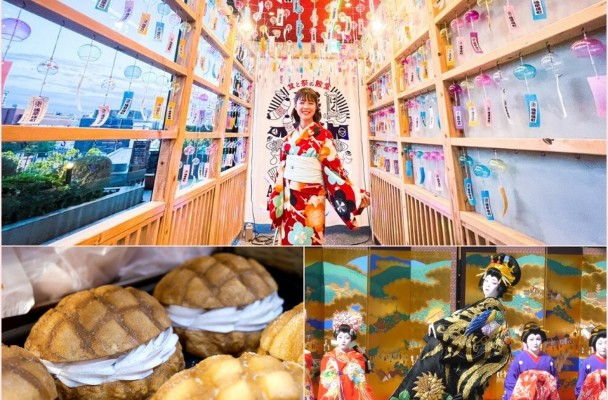

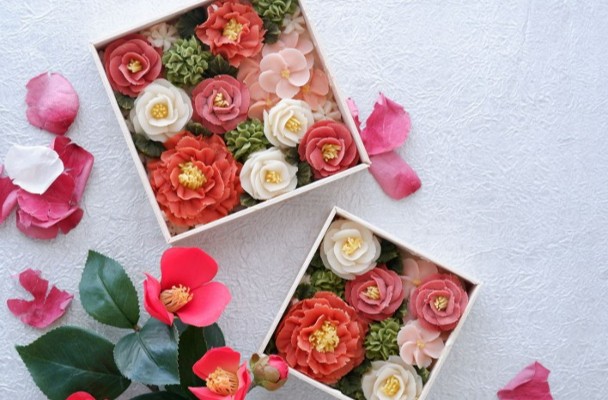


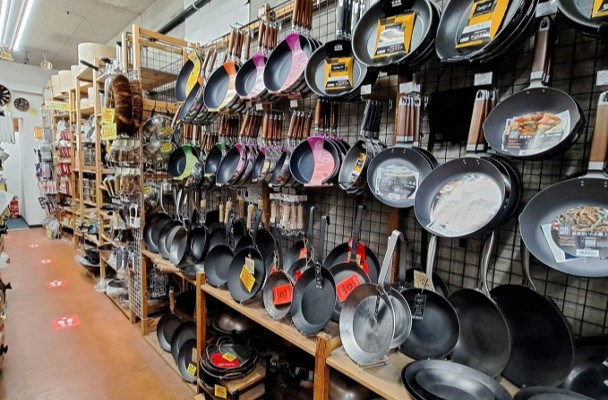
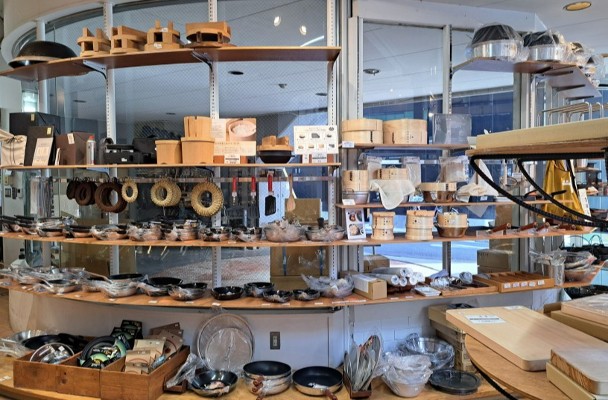
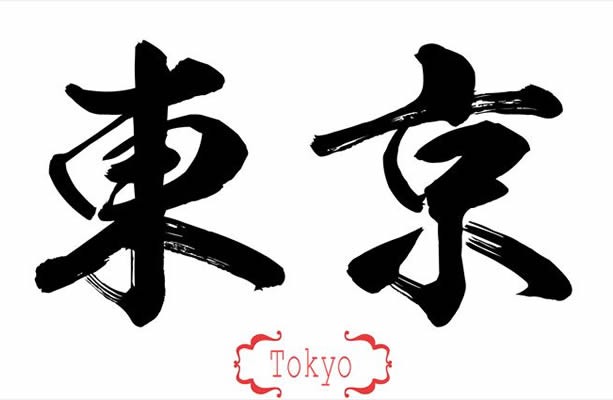
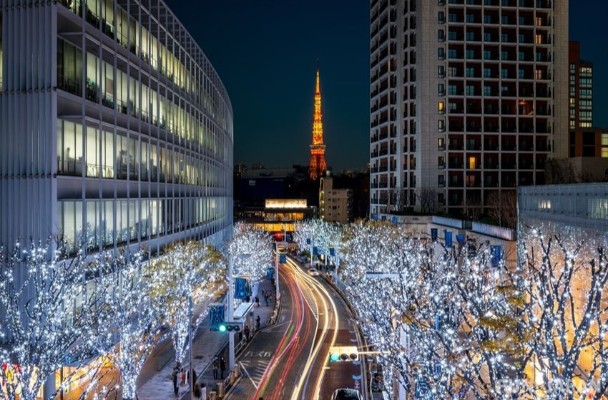
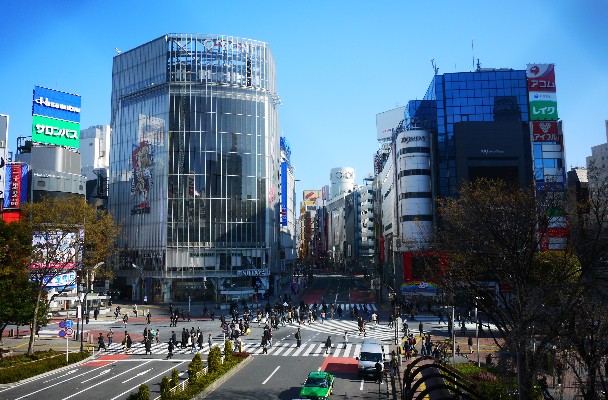
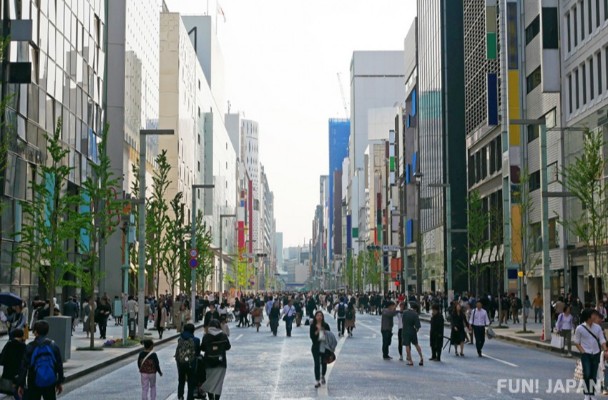


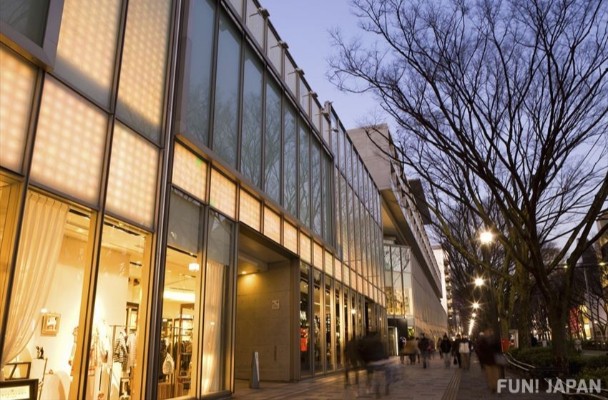
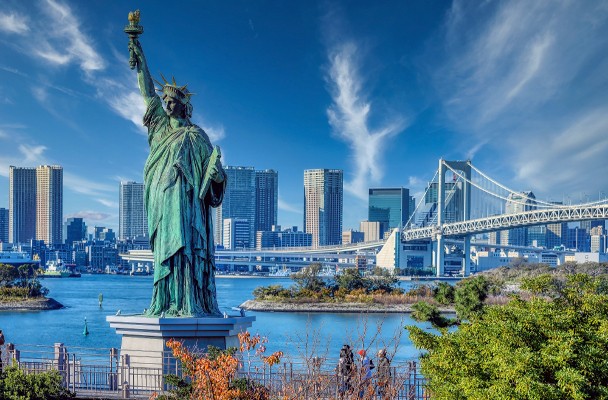
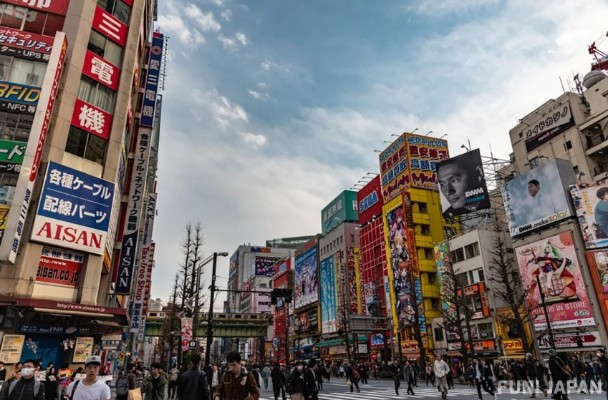

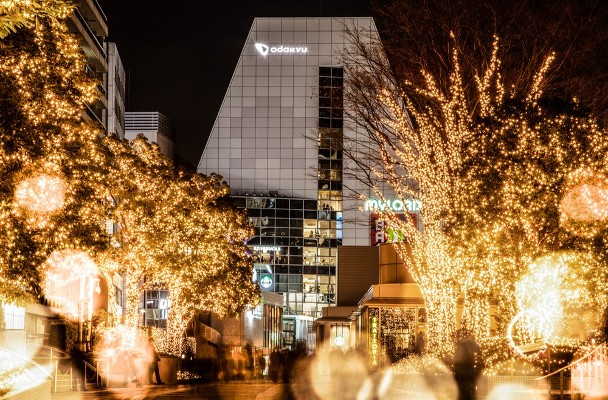
Comments